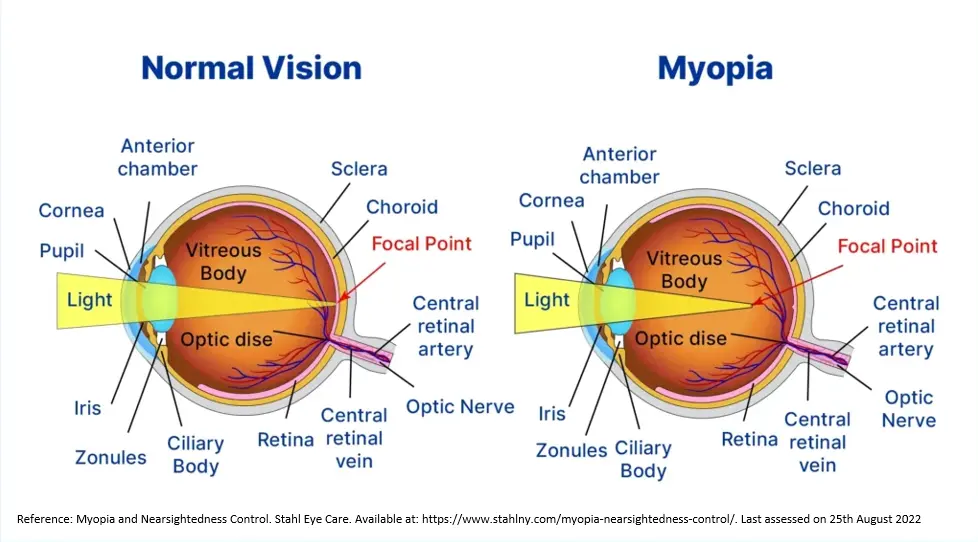Our science: Target and Precision
Develop first-in-class effective & safe treatment for Myopia, especially in children.
The Challenge

The Challenge
The challenge today is that Myopia is a global pandemic and approximately 50% of the global population is predicted to suffer from Myopia by 2050 unless preventive action and intervention are taken. 1
Myopia is one of the most prevalent vision issues globally, especially in children. More and more children around the world are becoming myopic and due to the lack of quality therapies are likely to progress to high Myopia and have serious complications eventually leading to blindness. 2
Pathological Myopia is predicted to become the most common cause of irreversible vision impairment and blindness globally. 3
Currently there are no FDA approved medications for the prevention and management of Myopia in childhood. 4
The challenge today is that Myopia is a global pandemic and approximately 50% of the global population is predicted to suffer from Myopia by 2050 unless preventive action and intervention are taken. 1
Myopia is one of the most prevalent vision issues globally, especially in children. More and more children around the world are becoming myopic and due to the lack of quality therapies are likely to progress to high Myopia and have serious complications eventually leading to blindness. 2
Pathological Myopia is predicted to become the most common cause of irreversible vision impairment and blindness globally. 3
Currently there are no FDA approved medications for the prevention and management of Myopia in childhood. 4
Our Solution
Theialife’s new molecule is a first in class, novel, oral therapy in the treatment and management of Myopia in children. This first in class molecule will change the Myopia management landscape, especially for children with early-onset Myopia, who otherwise, given the limited therapies available, are bound to progress towards severe and sight threatening Myopia.

References
- Bullimore MA, Ritchey ER, Shah S, Leveziel N, Bourne RR, Flitcroft DI. The risks and benefits of myopia control. Ophthalmology. 2021 Nov 1;128(11):1561-79.
- Sankaridurg P, Tahhan N, Kandel H, Naduvilath T, Zou H, Frick KD, Marmamula S, Friedman DS, Lamoureux E, Keeffe J, Walline JJ. IMI impact of myopia. Investigative ophthalmology & visual science. 2021 Apr 28;62(5).
- Németh J, Tapasztó B, Aclimandos WA, Kestelyn P, Jonas JB, De Faber JT, Januleviciene I, Grzybowski A, Nagy ZZ, Pärssinen O, Guggenheim JA. Update and guidance on management of myopia. European Society of Ophthalmology in cooperation with International Myopia Institute. European Journal of Ophthalmology. 2021 May;31(3):853-83.
- JJ W. Interventions to slow progression of myopia in children. Cochrane Database Syst Rev. 2011.
- Myopia and Nearsightedness Control. Stahl Eye Care. Available at: https://www.stahlny.com/myopia-nearsightedness-control/. Last assessed on 25th August 2022
